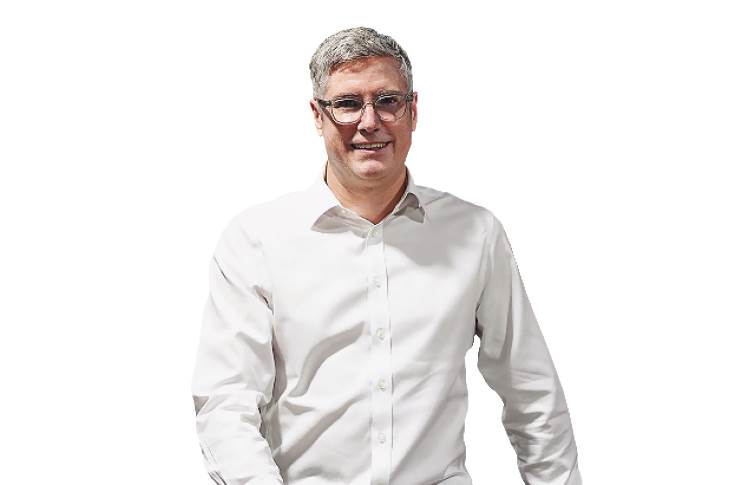It took 16 years of conversation between Pune, India-based Bajaj Auto and Hinckley, UK-based Triumph Motorcycles to churn out its first mid-size bike in 2023 to challenge the dominance of Royal Enfield, a brand that has single-handedly owned the space in India.
A record of sorts, reminds Bajaj Auto’s Managing Director Rajiv Bajaj to the media at the launch of the Triumph Speed 400 in Pune, of translating the conversation into a ‘real time’ project.
But now that it has taken off, Bajaj Auto says the entry could potentially take Triumph Motorcycles into a million motorcycles per annum territory.
This aspect also highlights that the mid-size motorcycle has been on the radar of India’s biggest two-wheeler exporter for over a decade and a half. And they are not the only ones. On the other hand, the duo of Hero MotoCorp and Harley-Davidson were quick to co-develop their mid-segment contender, the X 440 for India. The alliance came out with this offering in a record time of less than three years — showing the urgency to get into the segment — even as Bajaj Auto and Triumph Motorcycles carefully crafted a plan to participate in this growing segment.
The US iconic motorcycle brand was restructuring its organisation with a plan called ‘Rewire’ and ‘Hardwire’ just ahead of Covid-19 in the face of falling volumes and profitability in its global markets.
 ‘Little did we know that we would be in India to present something unique in the history of Harley-Davidson and Hero MotoCorp’: Jochen Zeitz, Chairman & CEO, Harley-Davidson
‘Little did we know that we would be in India to present something unique in the history of Harley-Davidson and Hero MotoCorp’: Jochen Zeitz, Chairman & CEO, Harley-Davidson
Jochen Zeitz, the Chairman and CEO of Harley-Davidson recapped that almost three years ago, he picked up the phone and called Pawan Munjal, Chairman of Hero MotoCorp and said that both brands should be doing something together in India.
“Little did we know that we would be here (in India) three years later to present something unique in the history of Harley-Davidson and Hero MotoCorp that will make Harley-Davidson accessible to a larger Indian population,” said Zeitz.
The chairman of Harley-Davidson said while the company exited big bike manufacturing in 2020 in this country, he wanted to make sure Harley-Davidson continued to be represented in India, not just in the luxury segment, but eventually made accessible to younger customers who didn’t quite have the means to afford or own the expensive bigger Harley-Davidson machines. And that is how the conversation with Hero MotoCorp kicked off.
“The premium motorcycle market is a dynamic market and is growing fast with lots of competitors. However, customers are plentiful in India and we feel very confident of capturing significant market share in coming years, complemented by the broad Hero distribution network, making Harley-Davidson truly accessible pan India,” Zeitz explained.
While one has seen the entry of Triumph Motorcycles and Harley-Davidson, already the likes of Classic Legends with Jawa and Yezdi have attempted to grab a pie of the space and so has Honda Motorcycle and Scooters. And one does expect more options from the likes of TVS-Norton, TVS- BMW Motorrad, Piaggio, Benelli and Honda in the future.
What’s behind the euphoria?
In Indian motorcycle market parlance, the mid-sized segment can be broadly categorised into two engine displacement categories — 250cc to 500cc and 550cc to 750cc (this represents the higher premium range). This segment was one of the fastest to recover and witnessed an uptick in demand after the double jolts of the Covid pandemic that left the entire domestic two-wheeler in turmoil. While the entry two-wheeler segment has remained under pressure and in the negative growth territory, bikes priced over Rs 1.5 lakh have grown by 10-15 percent in the last few years.
Close to a million units are sold in India and if you add the global markets, the overall pie is two million units. But it is not just about the volumes but also about perception and positioning.

‘There is a lot of excitement around mid-capacity bikes, bringing in more younger people into the riding population’: Nick Bloor, CEO, Triumph Motorcycles
Bajaj Auto believes the mid-size motorcycle segment is also among the profitable segments to participate in. Drawing a parallel to the famous American bank robber Willie Sutton’s remark, Bajaj stated, “When Sutton was asked, why does he keep robbing banks, his reply was — that is where the money is. So, money is in the Royal Enfield (segment), hence there is no other choice but to rob them (mid-size bike segment)!”
Given the scale at which Royal Enfield operates Harley-Davidson, Triumph Motorcycles and BMW Motorrad knew that if they really want to gain in this growing segment, they can’t do it on their own.
Hence, these global iconic brands have partnered with Indian giants like, Hero MotoCorp, Bajaj Auto and TVS Motor respectively.
An emergence of the adventure and lifestyle
While motorcycling communities have pushed the mainstream OEMs, apart from Royal Enfield, to focus on creating new experiences and rides, is playing a big role in expanding the club of riders.
One primary reason behind the spike in popularity of the mid-segment and premium motorcycles is that buyers of such bikes are not swayed by the cost of the bike or rising fuel prices. Not surprisingly the profit margins are healthy in double digits, says Hemal Thakkar, Director, Consulting, CRISIL Market Intelligence and Analytics.
A recent report by his agency suggests improving operating leverage and premiumisation in product mix will help OEMs sustain operating profitability at 13-14 percent.
“For millennials and Gen-Zs, the factors such as higher purchasing power, aspiration for luxury brands and evolving lifestyles are playing a crucial role,” says Thakkar.
Experts say the traditional power performers have not cracked the code of market dynamics beyond 250cc. And to succeed in the mid-size segment, one has to master the art of “experience selling” rather than a “product selling.”
“Legacy players are trying to move up in the value chain to churn out two major benefits — enhance brand positioning to command pricing power and generate higher realisation to boost bottomline. The global partnership will only strengthen the brand’s positioning,” Thakkar explained.
The country’s largest two wheeler maker — Hero MotoCorp who has made significant attempts to crack this space, but met with limited success, is hoping for a positive rub off from the Harley-Davidson tie-up.
The X440 version of a Hero MotoCorp product will be launched in Q4 of FY24, and the market leader has promised a lot of other products in the 200cc-450 cc space also. Niranjan Gupta, CEO of Hero MotoCorp says the company is gearing up for highest ever model introductions this fiscal as it looks to build market share in the premium bike segment ranging from 200cc to 450cc.
“It is about building a portfolio. You will see a number of launches in the premium segment in the coming year. Big launches this year will ensure that we can build the right premium portfolio and build our market share on that,” Gupta said.
Similarly, to create strong ground to participate in this growing segment, TVS Motor Company has created a dedicated Premium bike division under Vimal Sumbly — former head of Triumph India, who has also worked with premium bike makers Bajaj Auto and Royal Enfield in the past.
A Southern India based two-wheeler major yet to enter the 350-400 cc segment is the TVS Motor Company, but it is creating ground, by aggressively sprucing up its premium play from 150-300 cc category, before it joins the rat race.
Sumbly said that the premium bike industry grew at a CAGR of 14 percent between 2014-2019, doubling its volume during the period. This growth was impacted during the pandemic years of 2020-2021 and now it is seeing a strong recovery, he noted.
While Sumbly is focused on strengthening the Apache and Ronin brands in the entry premium category, TVS Motor is working on mid-size motorcycles in partnership with UK-based Norton Motorcycles, a brand it acquired a few years ago.
Sumbly is non-committal on future products but hints at possibilities. “We will further strengthen our premium product offerings in FY24 with new launches and refreshes and offer our global customers the latest generation of products with cutting edge performance and technology,” he says.
Sole warrior up for a battle
Interestingly, in the 350 cc to 500 cc categories, Royal Enfield has enjoyed virtual monopoly for over a decade and a half, single handedly growing the total industry volumes from 50,000 units annually to close to a million.
However in recent years, it has not been able to breach a monthly sales mark of 65,000 to 70,000 units despite multiple model launches.
Rakesh Sharma, Executive Director at Bajaj Auto says what led to stagnation was the lack of excitement and options in the marketplace. With new vehicles coming in, the segment is set to expand rapidly.
The mid-size motorcycle segment, Sharma says, accounts for about 10 percent of the overall market and he expects that share to shoot up to 16-17 percent in the coming years. That was about 6-7 percent pre-Covid-19.
“There is an economic dimension to this segment. The purchasing power of the buyers of this segment in the last 10 years has improved drastically, as against entry level buyers whose incomes have eroded,” said Sharma.
Way forward
- The growth of India’s mid-size bikes very well reflects the rising aspiration of India’s youth whose disposable income is set to take off.
- This new chapter of Hero Motocorp-Harley-Davidson and Bajaj Auto-Triumph ushers in a new set of dynamics for the market.
- Aggressive pricing strategy has been possible by overcoming the stiff tariff barrier that the foreign brands experienced with CBU or CKD kits.
- The contribution of the Indian partners and their technical strengths in R&D and production has ensured global quality products for the brands.
In the last four months alone, the average sales of motorcycles in the mid-size segment in India has increased from 65,000 to 90,000 units a month and with the launch of new products from Triumph Motorcycles and Harley-Davidson, the segment is set to accelerate, believes the Exectuive Director at Bajaj Auto who is steering Triumph brand expansion in India.
Made in India for the World
For the global vehicle makers — it not only allows them to participate in the growing Indian market but also use the country as a base to serve a large global market.
While Harley-Davidson has said the immediate focus is on the Indian market, Triumph already expects these mid-size bikes to potentially double its overall volumes in the coming two years. Already there is a visibility of adding 40,000 to 50,000 units in India and globally to its overall volumes of 90,000 units per annum of big bikes.
Having explored 250 cc motorcycles in the past, Steve Sargent, Chief Product Officer Triumph Motorcycles felt that 400 cc bikes have hit the sweet spot of performance and price. Sargent says 400cc machines broaden the appeal and bring more younger people into the fold and it will offer them a critical stepping stone to grow into big bikes not only in India, but globally too. The Chief Product officer at Triumph explained while the growing young middle-class buyer was the biggest draw for the company but globally too there is a shift towards mid-size, which the company can capitalise on.
“You weren’t a real man, if you were not riding a big Harley or an Indian Motorcycle in the US, but that notion is changing fast. Historically, in markets like the US, if a buyer was riding anything below 990 cc it was frowned upon, but that has changed, and a similar trend is visible in Western Europe too, wherein more and more younger buyers are choosing mid-size bikes for commuting purposes, he says and adds, “The big bikes can be intimidating; hence we have seen the shift to these mid-size bikes around the world. A young buyer would never jump straight to big bikes. We felt that 400 cc was just the right size — something that is accessible and realistic to ride,” said Sargent. Amid rising inflation, 400 cc bikes have turned out to be the ideal choice. People coming into their first job, using it for commuting purposes, there are a lot of female buyers. So, the Speed 400 is a good entry point for people to grow into big bikes eventually.
India: The epicentre of mid-size motocycles
With almost a dozen alternatives underworks from the likes of Triumph Motorcycles, Harley-Davidson, Honda, Norton-TVS, Honda, Piaggio, Benelli, this segment is set to explode, Thakkar says, driven by evolving markets and social trends. “With the rising culture of riding and OEMs widening horizons, I will not be surprised if this segment doubles up to two million units over the next five years,” he added. Before the launch of Speed 400, the cheapest Triumph motorcycle was priced almost three and half times more at around Rs 8.12 lakh and with local manufacturing and Bajaj Auto’s support, the demand for the model is set to explode. The company has already received over 10,000 bookings in just 10 days.“We believe this lower price will enable Indian customers to evaluate Triumph products with a fresh lens, especially if the vehicle performs well on the road,” analysts at Jefferies India said in a latest report.
According to Jefferies India’s estimate, the company may factor in volumes of 10,000 units per month by FY25 from the jointly-developed products, as compared to Royal Enfield’s total domestic volumes of 61,000 units per month in FY23 and 77,000 units in FY25. While the likes of Harley-Davidson and Triumph Motorcycles are entering the major cities, the market leader Royal Enfield through its Studio stores is aggressively penetrating the richer village and Tier III and IV towns with its latest Hunter 350cc motorcycle. “With the Hunter, we are going into the rural market. We have a reach of about 2,100 premium outlets. With the product, widening network and market development activities at a time when the economy is growing, we feel there is a good potential for us to grow in hinterlands,” Govindarajan, CEO, Royal Enfield told analysts. With close to a dozen models in the making, Royal Enfield will not seize ground easily. While the rivals are charging at the company, RE is creating new nodes of growth — overseas market, electric vehicles and big bikes, which a lot of existing Royal Enfield buyers many want to upgrade to.
Stepping stone for big motorcycles
Royal Enfield Interceptor has already started to receive traction in India as well as globally, as more people enter the 400-500cc segment, the ground will be created for big bikes in the future. Interestingly, despite a large population and rising disposable income, the premium large motorcycle segment remained suboptimal when compared to emerging market peers from South East Asia. Sharma says not much effort has been put in to build the biking culture in the country. There are very few initiatives being taken to build the MotoGP, Motocross, adventure events, circuits etc. With strong action from global players, “The 400cc segment is ripe for a takeoff, (including customer initiatives)” says Sharma.
This feature was first published in Autocar Professional’s July 15, 2023 issue.
